Time flies! Today marks the six month anniversary of The Silent Sod. Char and I are so thankful to our readers, commenters, subscribers, and anyone who engages with our work. If you enjoy what we post, we’d love for you to recommend The Silent Sod to a friend or share it on social media:
We’re excited to keep bringing you weekly content exploring death, memory, and meaning.
On our recent trip to Boston, my uncle and I were walking behind a mother and three kids on the Freedom Trail when we approached Copp’s Hill Burying Ground.
“What’s that?” one of the kids asked.
“It’s a cemetery,” the mother said with some level of disgust.
“Not going there,” another child said.
They walked past the entrance gate while I resisted the urge to yell at them from behind, “But you’re missing the best part of the trail!”
Freedom Trail Burying Grounds
The Freedom Trail is a 2.5 mile marked path through Boston with sixteen sites that highlight the story of the American Revolution. Three of those sites are burying grounds: Granary, King’s Chapel, and Copp’s Hill. All three were established in the 1600s and feature slate headstones that in many cases have withstood time better than marble stones popular in the 1800s during the Victorian era.

Memento Mori
The Puritans, who settled Boston in the 1600s, believed in predestination: an elect group of people chosen by God at the beginning of time would be saved while everyone else would live only to die. Depictions of skulls and crossbones appear frequently on stones to remind visitors of their inevitable mortality and this potential fate. Memento mori (“remember you must die”).
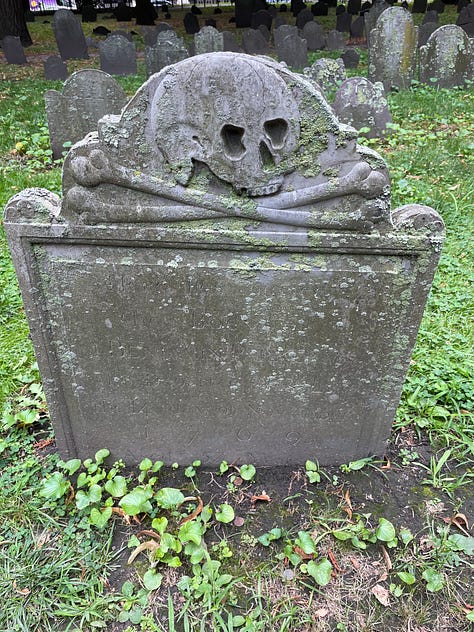
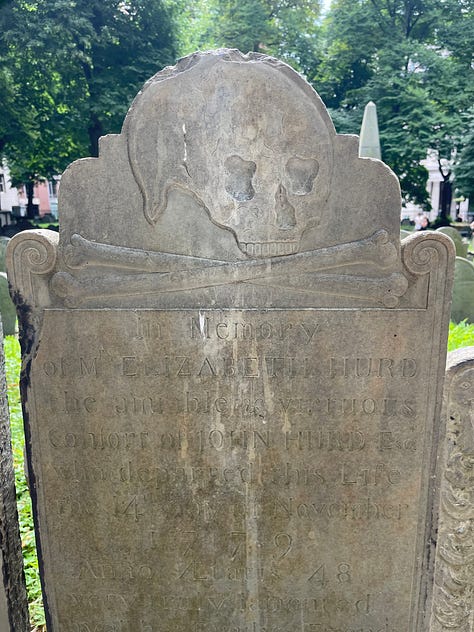
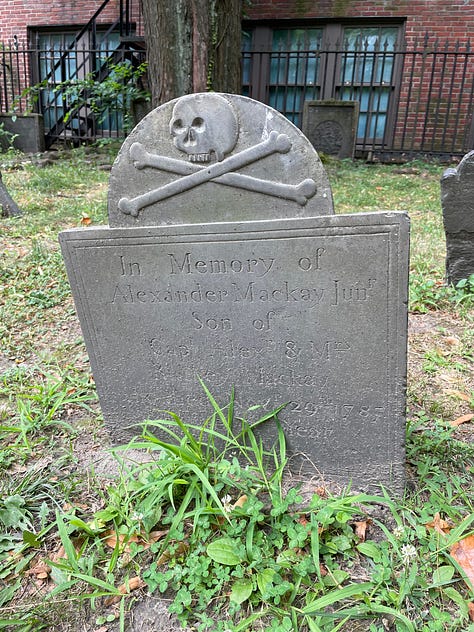
Hora Fugit
Another motif I spotted on many of the gravestones was an hourglass. Used for centuries as a timekeeping device, an hourglass represents the passage of time and life’s inevitable outcome, death. When the hourglass is paired with a set of wings, it emphasizes how quickly life passes.
I especially liked one grave in the King’s Chapel Burying Ground that included an hourglass and the Latin phrases memento mori (“remember you must die”) and hora fugit (“time flies”).
Even cooler? The central panel showing a skeleton being forced to extinguish a candle by a grim reaper holding an hourglass. Here are some closeups:
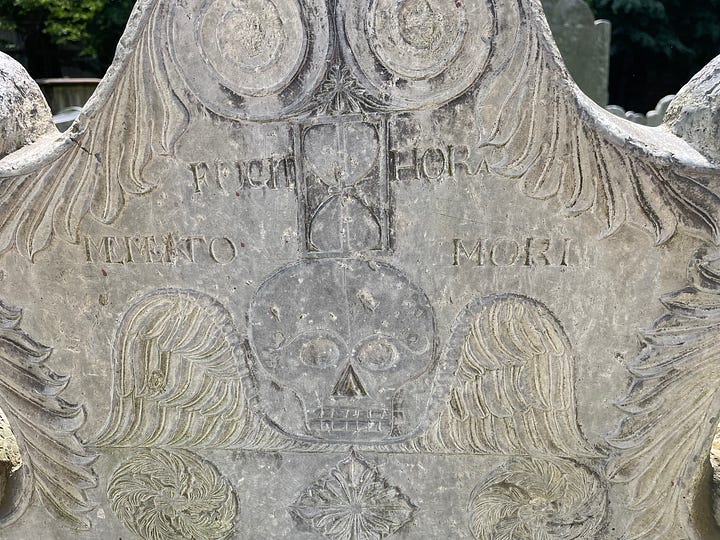
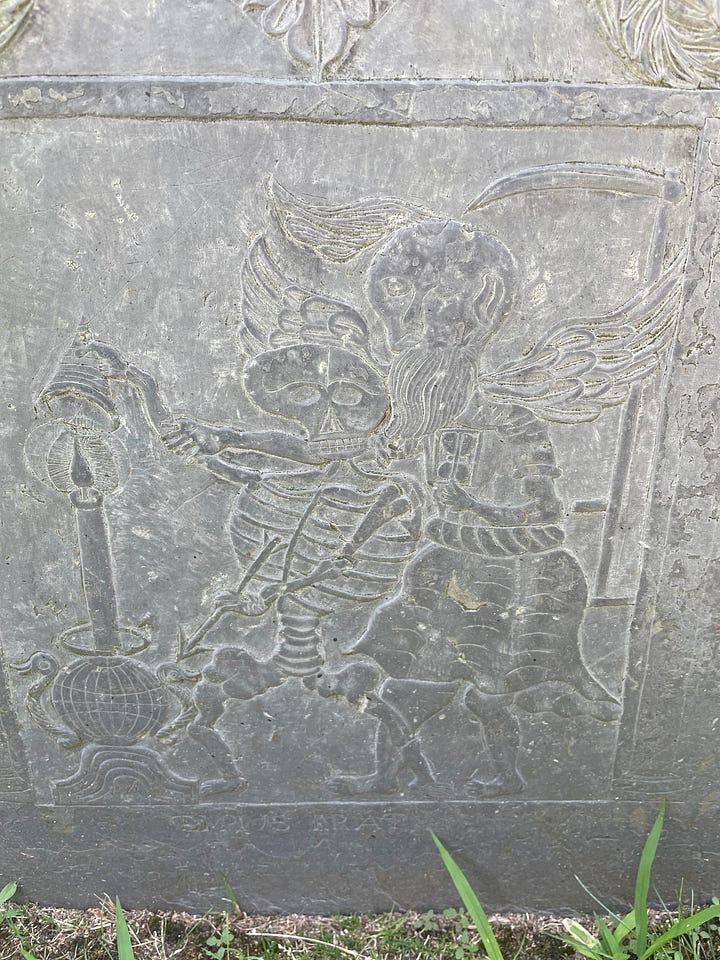
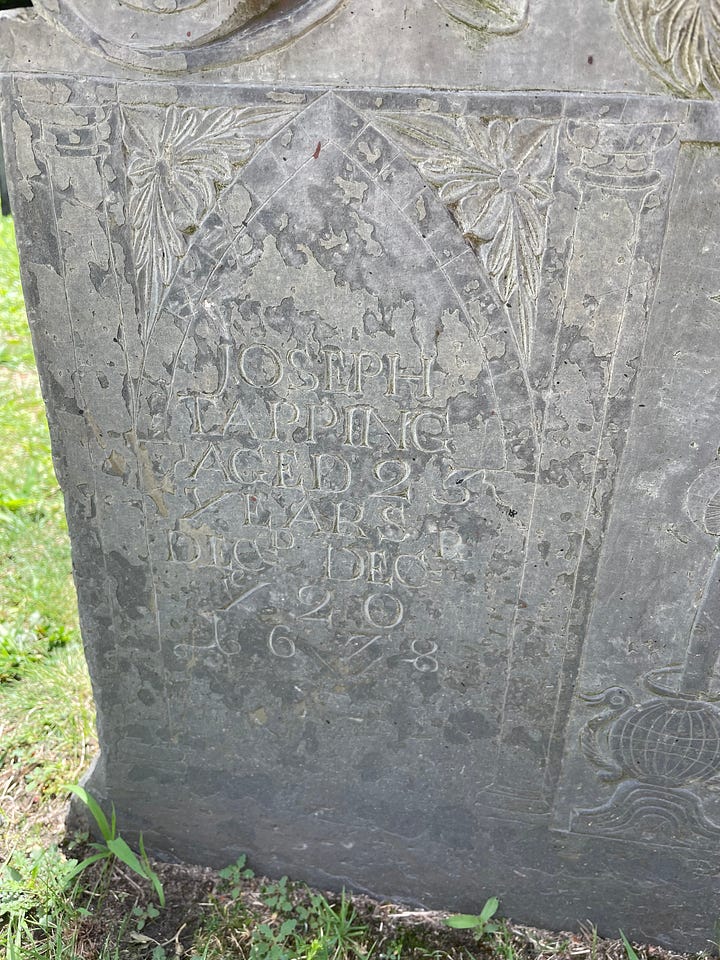

I tried to take as many pictures of hourglasses on gravestones as I could since this symbol is part of the logo design for The Silent Sod.
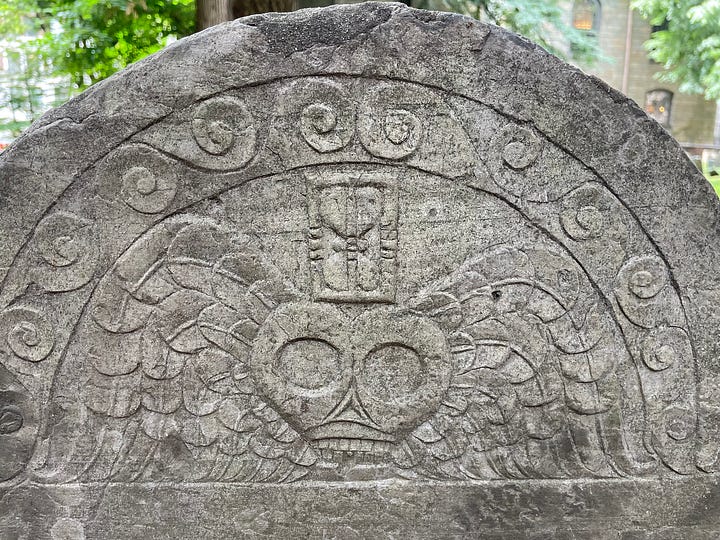
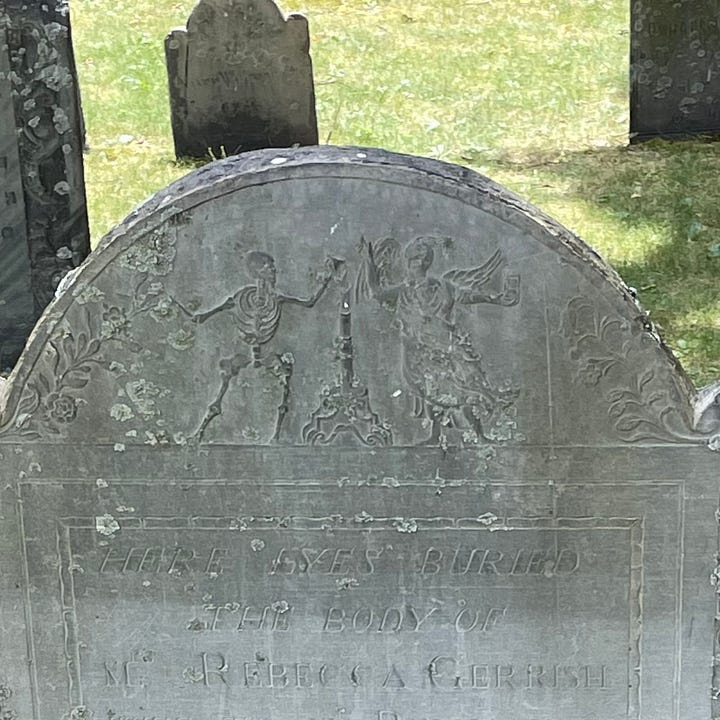
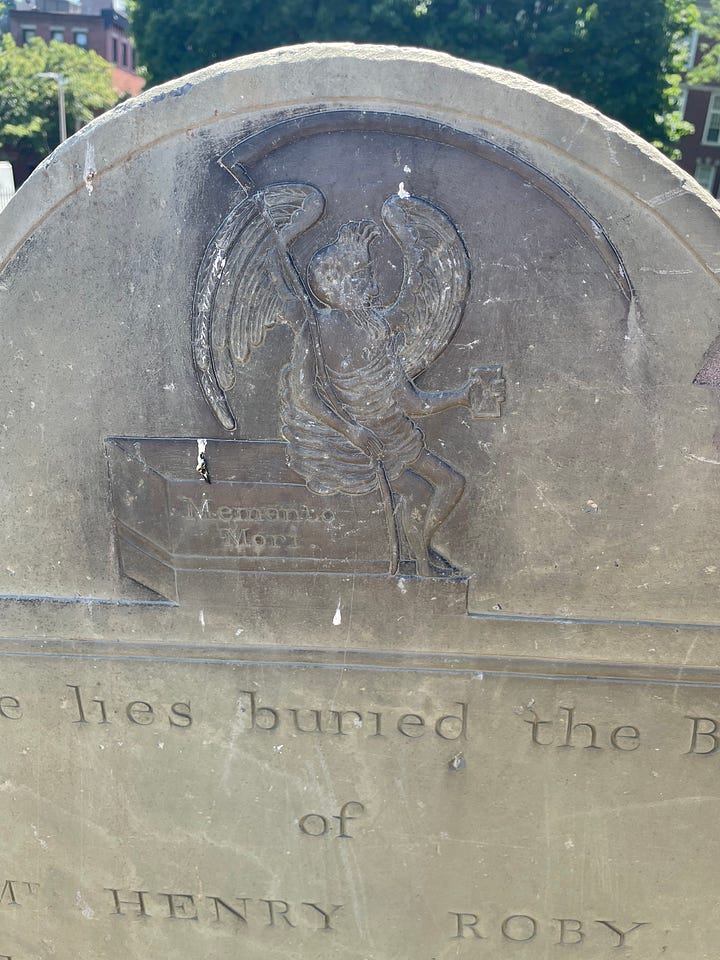

Hope for salvation
Visiting the Boston burial grounds also gives a sense of how thoughts about the afterlife changed over time. As mentioned above, the early Puritan settlers had a pretty grim view of death and the symbolism to match. Eventually, skulls and crossbones gave way to skulls with wings (i.e., death heads, shown above) and eventually faces with wings (i.e., soul effigies) indicating more hope for salvation
You can find the gravestone pictured above in Copp’s Hill Burying Ground. It remembers twenty year old Mrs. Elizabeth Herman and includes this epitaph for her:
an Angel's hand can't snatch her from the grave Millions of Angels can't confine her there.
The grave also recognizes her infant daughter Eliza, who died about a year before her. Here’s my best approximation at Eliza’s epitaph:
Sleep! Sleep! sweet babe & take thy rest God calls the home he tho't it best
More on Symbolism
If you’re interested in learning more about gravestone symbolism, I highly recommend the book Stories in Stone: A Field Guide to Cemetery Symbolism and Iconography by Douglas Keister. It’s small enough that you can carry it around a cemetery with you.





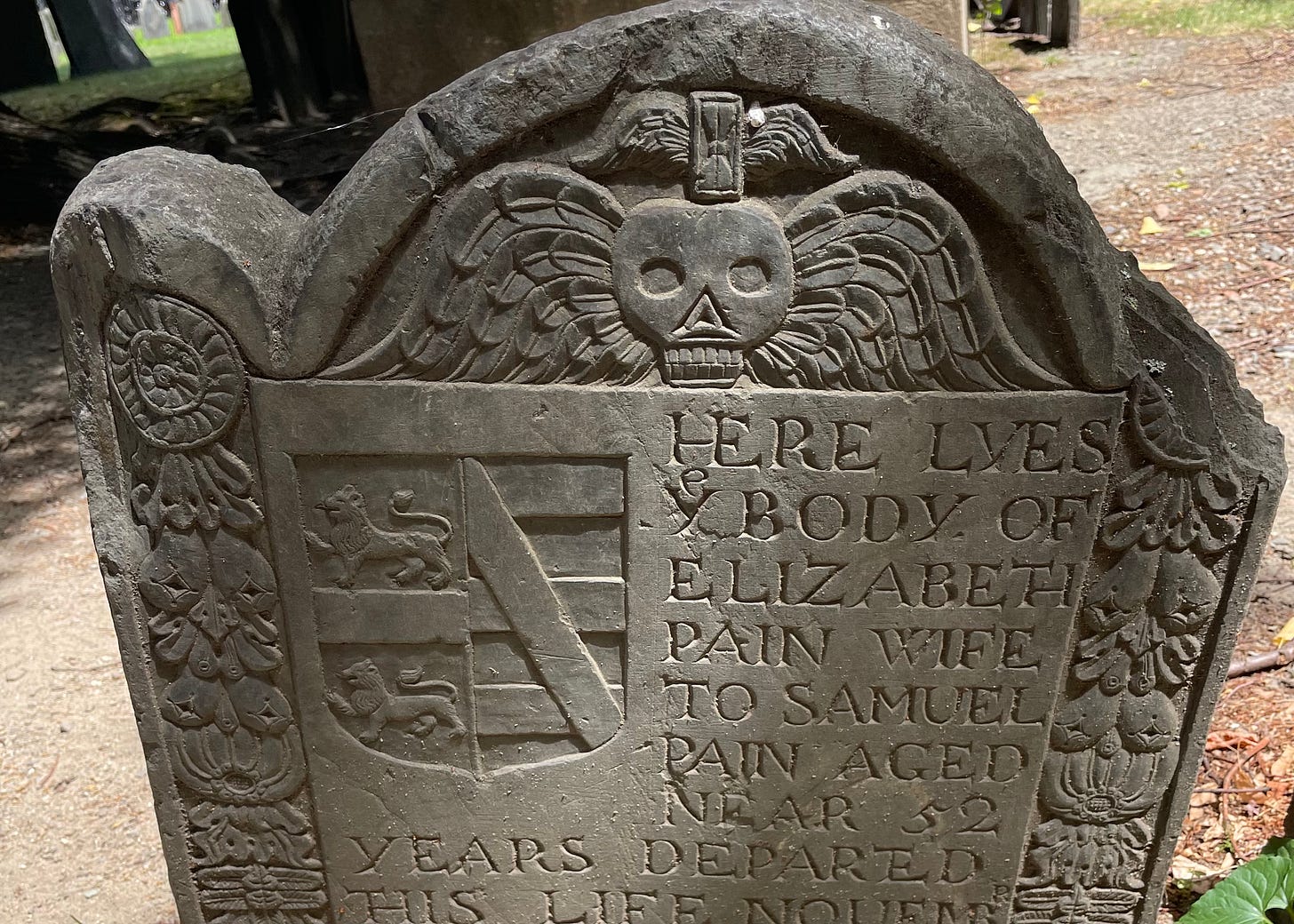
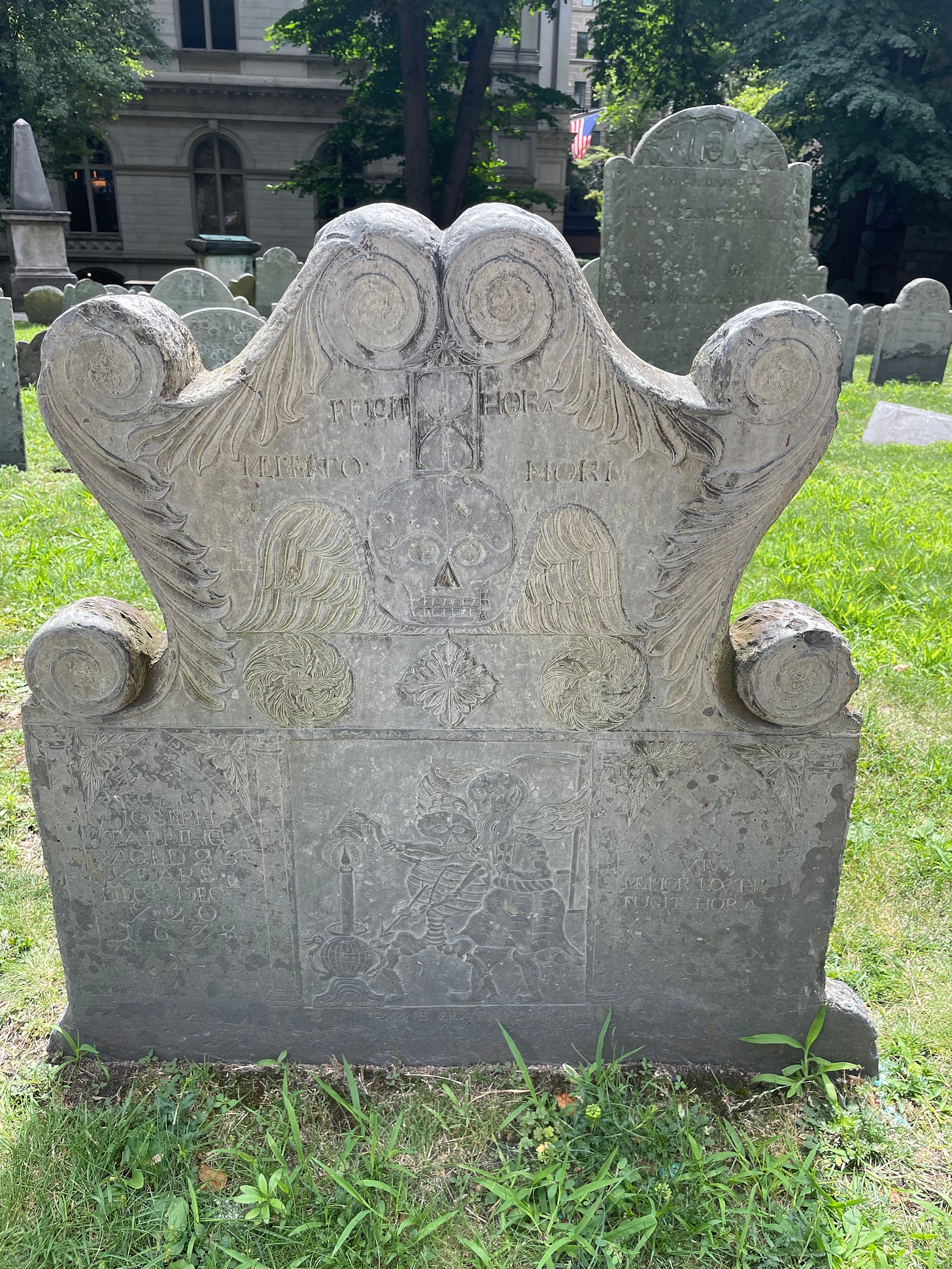

Wow, this is cool! Very good pictures and informative.